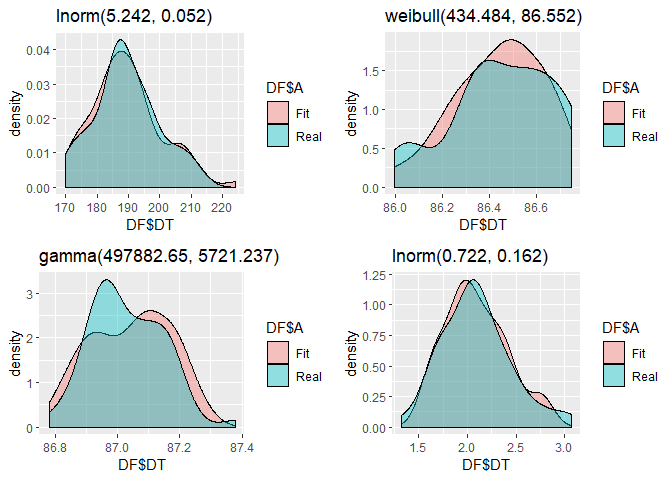
The hardware and bandwidth for this mirror is donated by METANET, the Webhosting and Full Service-Cloud Provider.
If you wish to report a bug, or if you are interested in having us mirror your free-software or open-source project, please feel free to contact us at mirror[@]metanet.ch.
The goal of FitUltD is to fit data that can’t be fitted with ordinary density functions
You can install the released version of FitUltD from CRAN with:
install.packages(“FitUltD”)
This is a basic example which shows you how to fit a multimodal random variable:
library(FitUltD)
#> Loading required package: mclust
#> Package 'mclust' version 5.4.5
#> Type 'citation("mclust")' for citing this R package in publications.
#random Variable
RV<-c(rnorm(73,189,12),rweibull(82,401,87),rgamma(90,40,19))
FIT1<-FDistUlt(RV, plot=TRUE, subplot = TRUE)
#> <simpleError in optim(par = vstart, fn = fnobj, fix.arg = fix.arg, obs = data, gr = gradient, ddistnam = ddistname, hessian = TRUE, method = meth, lower = lower, upper = upper, ...): non-finite finite-difference value [2]>
#> <simpleError in optim(par = vstart, fn = fnobj, fix.arg = fix.arg, obs = data, gr = gradient, pdistnam = pdistname, hessian = TRUE, method = meth, lower = lower, upper = upper, ...): non-finite finite-difference value [2]>What is special about using README.Rmd instead of just
README.md? You can include R chunks like so:
FIT1[[3]]
#> Distribucion Prop_dist AD_p.v KS_p.v Chs_p.v
#> AD6 lnorm(5.242, 0.052) 0.29795918 0.8372311 0.8985857 0
#> AD8 weibull(434.484, 86.552) 0.09387755 0.8861584 0.7938189 0
#> AD2 gamma(497882.65, 5721.237) 0.24081633 0.7523182 0.7705192 0
#> AD61 lnorm(0.722, 0.162) 0.36734694 0.9807500 0.9616154 0You’ll still need to render README.Rmd regularly, to
keep README.md up-to-date.
You can also embed plots, for example:


These binaries (installable software) and packages are in development.
They may not be fully stable and should be used with caution. We make no claims about them.